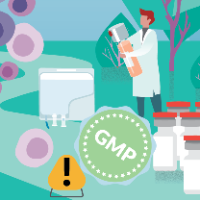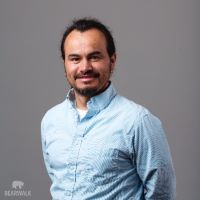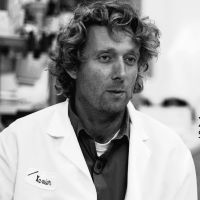Empowering the future of cell therapy: leveraging partnerships to support advancement
Cell & Gene Therapy Insights 2023; 9(10), 1423–1433
DOI: 10.18609/cgti.2023.185
As the number of new cell therapy companies steadily rises, a different approach and perspective is needed to ensure correct support is provided to promote the success of new advancements and foster the therapeutic potential that early developers hold. The journey from discovery to market is challenging and collaborative relationships among stakeholders, such as drug developers, academic institutions, and industry partners, offer an effective framework for addressing these challenges. Tools providers specifically play a vital role by developing innovative technologies and platforms for cell therapy manufacturing. In this article, we will explore the significance of these relationships and discuss the related barriers, opportunities, and responsibilities for emerging drug developers, tool providers, and early discovery teams. We will share insights on how collaborative technical work can facilitate knowledge exchange, funding access, and impact the establishment of shared infrastructure, enabling efficient navigation of the complex cell therapy landscape. We will also share experiences relating to training, investment, and how collaborative frameworks can empower early discovery teams and create a thriving ecosystem that supports the advancement of cell therapy research and development.
Introduction: leveraging collaboration to drive innovation in the cell therapy space
Product flexibility and customer engagement can enable commercialization success across the development continuum. Critical aspects include ensuring a robust supply chain to support commercialization, GMP compliance, having closed, automatable, and scalable processes, and maintaining a robust library of regulatory documentation to enable IND filings. Thermo Fisher Scientific offers solutions that can be used from the early phases of development onwards, which meet all of these critical aspects. The key aim is to help simplify and accelerate time-to-market through provision of trusted, high-quality products and services backed by collaborative support and a robust supply chain network.
In the cell therapy development journey from research through to clinical and commercial, developers often skip or shorten the process development stage. This can happen due to the need for rapid progress to commercialization, budget constraints, and a lack of accessibility to platforms. However, there are risks downstream when process development is neglected, including overly expensive and unscalable processes, non-compliance with regulated product standards, and reduced appeal for biopharma acquisition, all of which hinder commercialization.
In the context of the bio-incubator space, partnerships are essential to drive the economical use of biotech funding. Having scalable platforms and instruments—for example, the Gibco™ CTS™ Rotea™ Counterflow Centrifugation System, the Gibco CTS Xenon™ Electroporation System, and the Gibco CTS DynaCellect™ Magnetic Separation System instruments—centrally available for early-stage companies to access and adopt during the early phases can help accelerate process development. The backbone of this endeavor is collaboration within a larger ecosystem, with support provided in protocol development and instrument adoption.
Expert Roundtable
Discussion with Juan Patarroyo, Fiona Mack, Xavier de Mollerat du Jeu, and Josh Judkins (moderator)
JJ: Can you each briefly introduce yourselves?
JP: I am the Director of Science Operations and Strategy at LabCentral. I am what we term an ‘all-site’ team member of the LabCentral staff, and my main role is to understand the needs of each of the 120–130 resident companies within our ecosystem, spanning several different sites. They each work in different areas of therapeutics, including cell and gene therapy (CGT). My communication with them is key to understanding their needs and pain points so that we can bring in innovation and technology for them to move projects forward for themselves. I aim to bridge the gap between these companies and our equipment sponsors and suppliers.
FM: I am Vice President and Head of Co.Lab Cambridge, part of Bayer’s initiative to bring healthcare to all. An integral part of my role is to look into how we can invest in early-stage innovation to support our entrepreneurs. Co.Lab is a global network of life science incubators that are part of our broader business development strategy to foster early-stage innovation and provide the support of large pharma to help biotech companies bring their ideas to life. Co.Lab Cambridge, our flagship location, recently launched in May, 2023. It is dedicated to supporting companies within the CGT space. We leverage the enterprise-wide expertise that Bayer has in this field—for example, our affiliate companies, BlueRock Therapeutics and AskBio, are both developing novel therapeutics to treat CNS disorders.
Our site in Cambridge is partnered with LabCentral for operational excellence, allowing a great deal of expertise to reside in the same location. Furthermore, Co.Lab Cambridge is co-located with the Bayer Research & Innovation Center, providing access to internal expertise from oncology to CGT within the R&D organization, in addition to our business development colleagues. (Co.Lab is part of the business development organization for Bayer). Co.Lab Cambridge is a unique center of excellence that can harness all these resources and relationships.
XMJ: I am Senior Director of R&D at Thermo Fisher Scientific, based in Carlsbad, California. Our approach to cell therapy involves enabling our customers to take their drugs to the commercial stage. I represent the product side, helping to make different products to serve our customers from R&D to commercial. Over the past few years, we have created a cell therapy-focused applications team dedicated to supporting our customers. Their key aim is to assemble all of the technology across Thermo Fisher and integrate these technologies into processes to be shared through collaborations with customers. This enables customers to de-risk their processes by leveraging our knowledge directly. Through our collaboration program, we share protocols, know-how, and even instruments to help customers move through to commercialization.
We also work closely with bio-incubators like LabCentral, providing instruments and knowledge to enable their residents’ transition from discovery to commercial. Collaboration is win-win: the drugmakers get their drug on the market through our enabling tools, and in exchange, we receive incredible feedback on how to design our products, which can then be passed on to the product teams to inspire the next generation of products and instruments.
JJ: As someone who sits in the commercial part of the organization, developing relationships based on trust is what fulfils me the most. Could you expand on how to measure success when engaging with these collaborative partners? What are you getting from this engagement?
XMJ: Success for me is seeing products fulfilling a need for customers. We spend a lot of time and money developing products, so it is important that customers want to use them. This interaction is absolutely critical. When we get positive feedback, that is a huge success for me. As a product maker and developer, these interactions of knowledge sharing allow us to help customers take their products to commercial. Ultimately, we are speeding up processes to enable patient access to these drugs, which is what really matters.
JP: The mission of LabCentral is to provide the infrastructure and operational excellence that many companies need because they are often in the early stages of development without a lot of funding. Working in a collaborative way with our equipment providers is key for our early-stage biotechs to be able to develop essential processes, protocols, and workflows. This enables them to build packages for investors and to attract talent. Collaboration benefits everyone on the wheel, and the equipment sponsors are particularly key to that wheel because they have the know-how. They have the ability to take these instruments to the next level and use 100% of their capability. They can tailor any protocol to any need that a company has to hopefully benefit many of the patients who are waiting.
FM: Starting in a company at an early stage is risky but hopefully, rewarding. What can give you an edge over your competition is technical expertise that allows you to know what not to do. In many cases, it is important to fail fast in this business. We learn that not only through our strategic partnerships but from collaborations with companies in incubators. The experience of failing and restarting can be leveraged by being in an incubator and having that sense of community. With our Co.Lab incubators, Bayer hopes to move this beyond a regional level, across a global incubator network spanning Berlin, Japan, Shanghai. Success to me is knowing that a company has reached a milestone that they may not have been able to reach had they not used the Co.Lab incubator knowhow.
JJ: Can you expand on how you specifically support cell therapy in your respective incubators?
FM: The Co.Lab Cambridge was specifically designed to support early-stage CGT companies to utilize the world-leading expertise that we have within Bayer and its affiliates that are co-located within the sites. That access to expertise drives much of our decision-making. The space is designed to support lab work at the early stage, meaning there are many BCL2+ goods, for example, and analytical equipment available. Our strategic partnership with LabCentral 238 allows our residents to access more biomanufacturing equipment to enable process scalability at an early stage. Physically, the site is an open shared lab space with some private lab and office space depending upon individual needs. We have the ability for companies to grow and graduate into the LabCentral 238 space.
Besides the physical facilities, we provide mentoring discussions to match the needs of our residents with levels of Bayer’s internal expertise. These discussions can be very technical—perhaps about how to differentiate iPSC cells, for example—but could also be related to finding the best regulatory approach or designing a clinical trial that shows value for the drug. Through our various mentoring one-on-one sessions and groups, roundtable discussions, and scientific symposia, we bring in that scientific and industry expertise.
Bayer also has a manufacturing arm. In Berkeley, California, we have a CDMO business focused on contributing to early-stage process development. This group is willing to do things at reduced fees or even deferred payments for pilot studies for process development as companies begin to scale, with no strings attached. It can help reduce those transition timelines from one company to the other and help streamline time to clinic.
JP: From the LabCentral perspective, partnering with Bayer Co.Lab has been an incredible thing to do in terms of moving companies focused on CGT to the next level.
In the LabCentral 238 Main Street building, our labs are much larger, and they can support much larger teams in expanding their own processes and networking. These labs have been built specifically for process development work in many ways. For companies beginning to think about how to accelerate their drug discovery process, the labs and equipment are specifically picked for that purpose. It allows companies to test their system and protocols ahead of eventually take them to a CDMO. They have the ability to own these processes from the beginning, to make mistakes or be successful. At 700 Main Street, there were no process development capabilities, which posed challenges for some of the companies that came out of there. With that in mind, the LabCentral team decided to build this new facility at 238 for the pipeline of companies coming through.
It can be challenging for companies to know how to progress, as CDMOs often want different things. If we give companies the ability to start working on these processes from the beginning, it gives them more power to transfer this information to bigger CDMOs to start expanding their drug products. Partnering with equipment providers such as Thermo Fisher gives us the capability to offer the specific complex instrumentation required for process development.
XMJ: Equipment is paramount. Access to that equipment as early as possible helps developers to establish what they do not yet know. Drug developers can often focus on the disease and not fully appreciate what it takes to reach commercialization. Having access to Bayer, Thermo Fisher, or LabCentral helps to build an understanding of these process decisions. Moving a process to manufacturing is daunting. Leveraging an incredible amount of support from experts can dramatically speed up the process of making that drug available. It is a lot more than that just space and products; it is people around you who create a valuable knowledge ecosystem.
FM: We have recently started assembling a panel of experts ranging from discovery to regulatory to commercialization. We ask our Co.Lab residents for questions and then pose these to our panel. Developing long-term relationships with solution providers, incubator companies, and residents, is all key to building a strong ecosystem in a good position for success.
JP: The ecosystem of LabCentral involves companies talking and learning from each other. These companies coexist in the same building or area, and they learn what to do and what not to do through mentoring each other. The beauty of an incubator is that you are housing all these brains in one place in a way where they can feed each other to reach an ultimate goal.
JJ: I was an account manager at LabCentral for a number of years. When I first learned about this new facility, I knew Thermo Fisher was well placed to offer support as we have the infrastructure in place to do training and protocol development, and can connect residents with our CTI team. Our flagship instruments—the Rotea for cell processing, the Xenon for electroporation, and the DynaCellect for cell isolation based on Dynabeads—can offer transparent cell therapy process development for everyone. Xavier, could you shed more light on what a collaboration would look like with the Thermo Fisher CTI team?
XMJ: Many people see us as a toolmaker but with the collaboration team, we have created something new over the past few years. We want to show the value that we bring beyond just providing customers with products.
One of our issues is the sheer number of products we offer. Once these offerings are narrowed down to meet individual needs, then the collaboration begins. This can involve a visit to one of our sites to see things in action, including how to connect tools together. We freely share our protocols. We can also offer weekly or bi-weekly meetings to discuss problems and fix them or develop protocols to help customers. So, we are not just making tools—we also provide expertise in how to use them. We can also offer early access to future products so customers can prepare themselves for what is coming. We are together on this journey to commercialization.
JJ: How do these partnerships benefit us? Since this is provided for free, what do we get out of this transaction?
XMJ: The benefit to us is incredible. I make products for our customers, and if I do not get the intel on how they use them and what they want to do with them, then I will never develop the right products.
It also drives adoption. I want people to see the tools that we have. We act as the central point to connect people to other divisions of Thermo Fisher. As we have an overwhelming amount of tools, customers may only see the tip of the iceberg, but there is always more that we can offer to help. And ultimately, I get to see drugs all the way through to commercial, which is an incredible benefit in itself.
FM: A similar question often gets asked about open innovation on the pharma side. In order to continue to grow our business, we need access to what is going to be coming next, and hopefully, to have a hand in guiding that to benefit both our company and the patient. We are giving a lot of our time and internal research to this, but these ideas that may lead to another acquisition of an early-stage company, another investment, or a licensing deal, could have a tremendous impact on the value of our portfolios. There are lots of parallels to what we are doing here. It is great to see the different strategies and perspectives that we each have whilst trying to reach the same end goal.
JP: Hopefully, LabCentral is facilitating that collision between all of these different partners to create an ecosystem of collaboration. As CGT is such a complex modality, you need all the help you can get. The expertise from Bayer, Thermo Fisher, and other equipment suppliers can all synergistically come together.
JJ: If you could say anything to a toolmaker about what is required to support these kinds of advanced therapies, what would you tell them to do to ensure success?
JP: At LabCentral, we talk to companies and understand their needs and how they want to build their workflows and protocols. Then we work backwards, identifying what is needed for success. There is a lot of complexity to consider, including the chosen modality, and not all instruments may work in the same way.
We try to either bring in instruments that will be widely used, or place our companies in contact with others with the capabilities to help them. Again, that complexity can come in many different forms. We want to bridge that connectivity by talking to these resident companies, understanding their needs, and teaching them how to fulfill those needs.
XMJ: In cell therapy, we are at the beginning of the journey from a tool perspective. The tool makers have been working on first-generation products. We used a lot of bioprocessing knowledge when we made 5,000 L bioreactors. Then, we realized that was not going to work, and we needed to make things smaller.
Now, we are at the stage where these tools and products are on the market, and people are using and tweaking them. This is where we start refining, redeveloping, and building the next generation to fit developers’ needs. This is where collaboration is so critical. With intimate collaborations where people share their processes or what they want to do in the future, we can design better products.
JJ: What is the future of the incubator as new tools and therapeutic targets come to light? How will partnerships and collaborations drive the field another decade down the line?
JP: We keep our fingers on the pulse with regards to the science. CGT has been around for quite some time, but there are still waves of innovation taking place. We adapt as things change over time. To enable us on our mission to help companies deliver, we need to ensure we understand the science and what is coming up through the pipeline, whether it is CGT, small molecules, biologics, or delivery platforms. This enables us to bring in the right tools, the right equipment, and the right experts to help companies move forward, as ultimately, patients are waiting for these therapies.
FM: Since our opening, our focus has been on CGT companies, which is a broad field. Ultimately, we are looking for companies that can benefit from working with Bayer, and that could enable these platforms to become more ubiquitous. For example, we have been thinking about companies focused on small molecules for immunology to mediate some of the immune suppression to allow repeat dosing for some advanced therapies. We are also looking for the next generation of non-viral gene delivery, any diagnostics that could help with that, and novel ways to do clinical trial design or manufacturing to reduce costs to become part of our Co.Lab network. For me, the next generation means thinking broadly to expand our community, including expanding our virtual network. There, companies could tap into all the expertise in Bayer and within our community of partners. Those companies could be beyond the incubation state but still looking to solve the challenges of manufacturing.
As we begin to expand globally, we may not be so modality-focused, allowing us to think about companies that could be aligned overall with Bayer’s focus areas of cardiovascular diseases, oncology, and immunology. We want to ensure that we harness the full utility of the Bayer enterprise to enable growth.
JJ: Xavier, how are we at Thermo Fisher going to address the changing market?
XMJ: We have to try to understand the future because it takes 5–7 years to develop a product. In 7 years’ time, the cell therapy field will look different. Will there be centralized or decentralized manufacturing? What will the dosages be? Will people be using lentivirus or non-viral gene editing tools? It is incredibly challenging to predict. At Thermo Fisher, we are trying not to predict the future, we are trying to predict the different features of the future, such as predicting that hospitals may start manufacturing, or that large biopharma will need substantial amounts of centralized manufacturing.
We are trying to develop products that will fit in all those different scenarios. That is why we are keen on platforms and modularity. We know automation and closed systems are must-haves. We also want to predict how the processes will develop. The processes have already shortened from 12 days to 24 hours, so how fast will they be in the future?
We have processes in place to review new trends on a quarterly basis, to ensure our programs are consistently relevant. This is critical: the cell therapy industry is unique because it moves so fast.
Biographies
Juan Patarroyo is Director of Science Operations and Strategic Relationships, providing in-depth scientific, technical and strategic support to resident companies via direct engagement with each resident company. He also supports sponsor relationships identifying new technologies for LC resident companies. Prior to LabCentral, Juan was Principal Scientist at Novartis designing and developing new assays for drug development and identifying new targets for autoimmune conditions. He has over 20 years of drug development experience working in big pharma as well as star-up companies like the ones housed at LabCentral. His in-depth drug development knowledge will complement the science operations team engaging with resident companies to aid in their success. Juan obtained his BS in Microbiology and Chemistry from San Francisco State University.
Fiona Mack is currently Vice President, Head of Bayer Co.Lab Cambridge, USA, which is a part of the Business Development & Licensing/Open Innovation function. In this role, she is building a new cell and gene therapy incubator to accelerate innovation within the field. Prior to join Bayer, as Head of JLABS@TMC, Fiona was responsible for external engagement, innovation sourcing, company onboarding, portfolio management, operational excellence, educational programming, and P&L. She catalyzed and supported the translation of science and technology into valuable solutions for patients and consumers across the pharmaceutical, medical device, consumer, and healthtech sectors. Fiona has held senior leadership positions at Ipsen, Roche and Pfizer supporting external innovation efforts to expand rare eisease, neuroscience and oncology portfolios. Fiona earned her PhD in Cell and Molecular Biology from the University of Pennsylvania and her undergraduate degree in biology from Cornell University. Her innovative work has been published in high impact journals and she also has several granted patents.
Xavier de Mollerat du Jeu is the Senior Director of Research and Development of the Cell and Gene Therapy business unit at Thermo Fisher Scientific, first joining the company in 2005. His team is currently responsible for integrating new closed modular platforms into cell therapy production workflows. In his prior role, Xavier and his team developed cell therapy processing platforms and identified new DNA delivery approaches for hard to transfect cell lines and primary/stem cells—inventing Lipofectamine® 3000 and authoring several patents around nucleic acid delivery in the process. Xavier studied molecular biology and plant physiology at the University of Montpellier II in France and received his PhD in Human Genetics in 2003 from Clemson University in South Carolina. His thesis work involved identifying the gene(s) responsible for split hand/split foot malformation 3 (SHFM 3). His post-doctoral fellowship research was in the laboratory of Dr Michael G Rosenfeld at UCSD, where he studied the roles of microRNAs in pituitary gland development.
Josh Judkins earned his BS in Biochemistry from Ohio Northern University, and MS and PhD in Chemistry and Chemical Biology at Cornell University. After graduate school, Josh completed a postdoc in neuroscience chemical biology at Pfizer in Cambridge, MA and has been active in the biotech community in eastern MA since. After Pfizer, Josh joined Thermo Fisher Scientific where he has been for over 7 years holding various life science-focused technical roles, and is currently the Eastern MA Cell and Gene Therapy Business Development Manager.
Affiliations
Juan Patarroyo
Director of Science Operations and Strategic Relationships,
LabCentral
Fiona Mack
Vice President, Head of Bayer,
Co.Lab Cambridge.
Xavier de Mollerat du Jeu
Senior Director of Research and Development,
Thermo Fisher Scientific
Josh Judkins
Cell & Gene Therapy Business Development Manager,
Thermo Fisher Scientific
Authorship & Conflict of Interest
Contributions: The named author takes responsibility for the integrity of the work as a whole, and has given his approval for this version to be published.
Acknowledgements: None.
Disclosure and potential conflicts of interest: The authors have no conflicts of interest.
Funding declaration: The authors received no financial support for the research, authorship and/or publication of this article.
Article & Copyright Information
Copyright: Published by Cell & Gene Therapy Insights under Creative Commons License Deed CC BY NC ND 4.0 which allows anyone to copy, distribute, and transmit the article provided it is properly attributed in the manner specified below. No commercial use without permission.
Attribution: Copyright © 2023 Thermo Fisher Scientific. Published by Cell & Gene Therapy Insights under Creative Commons License Deed CC BY NC ND 4.0.
Article source: This article is based on a transcript of a webinar, which can be found here.
Webinar recorded: Sep 21, 2023; Revised manuscript received: Nov 13, 2023; Publication date: Nov 23, 2023.






